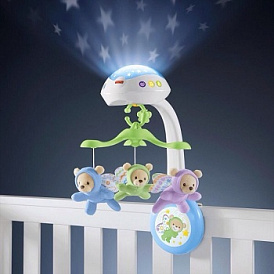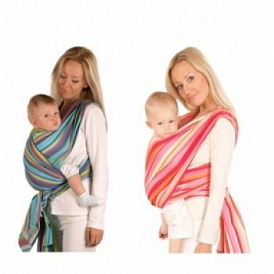How to choose shoes for a child
Before buying ordinary or orthopedic shoes, you need to pay attention to the material, the sole and the insole of the product you like. You should also take into account the age of the baby, the features of the anatomical structure of the legs and other characteristics - which ones, you will find out in our article.
Content
The best manufacturers of children's shoes

The baby will not need shoes until he starts walking. Even when he learns to take the first steps, let him make them barefoot. It does not harm him. For correct formation of the arch of the foot (prevention of flat-footedness) at this age, not medical shoes are needed, but “travels” on uneven surfaces.
For walking on the street, of course, shoes are needed, and it is advisable to buy it from trusted manufacturers.
The best world brands of children's shoes are:
-
Geox (Italy);
-
Viking (Norway);
-
Demar (Poland);
-
Columbia (United States);
-
Crocs (USA);
-
Kuoma (Finland);
-
Woopy (Turkey);
-
Bebetom (Turkey).
The best domestic manufacturers:
-
Totto;
-
Kotofey;
-
Kapika;
-
Children's runner;
-
Zebra.
What to look for when choosing

Material
Shoes should be made of natural and soft material. For these purposes, often used calf and pig skin. Leather shoes are distinguished by durability and the ability to "adapt" to the foot of the baby. But calf leather is more elastic and stronger than pork, it does not deform, and no cracks appear on it. It is often used in the production of autumn and winter shoes.
Some models of children's shoes are made of suede. This material allows the leg to "breathe", it is elastic and soft enough. But for suede shoes need special care - timely brush cleaning, treatment with special means.
Children's shoes can be made of combination or artificial leather. It is much cheaper than products made of genuine leather, but has low strength and poorly ventilated.
In the production of summer shoes for children often used textiles. This is an environmentally friendly and comfortable material that allows the legs to breathe and does not hamper the movements of the child.
Sole
The right sole is embossed, flexible and as thin as possible. It should provide the load on the leg to form a normal arch of the foot. It is not recommended to buy shoes with hard and even soles.
Heel
Sometimes babies fall back and hit the back of the head. But if you choose shoes with a small heel, you can “kill two birds with one stone” - reduce the risk of falling backwards and reduce the likelihood of flatfoot.
Orthopedists recommend that the heel be no more than 1/14 of the length of the foot of the baby.
The backdrop
In children's shoes should be a closed, rigid heel, which correctly fixes the ankle joint and prevents the feet from slipping in the product.
Insole
In the production of insoles should be used soft and absorbent materials.
Instep
In many models of footwear for children, an instep support is used.It protects against the development of flatfoot and helps to form a normal arch of the foot.
But a healthy child can do without an instep. The best prevention of functional (acquired) flat-footedness - walking on the surface with irregularities, protrusions and pebbles. If a child walks through grass and sand, walks on an orthopedic mat and uses the wall bars, he will not need any shoes with an arch support.
In cases where an anatomical or congenital flatfoot is diagnosed in a child, he should wear orthopedic shoes, which the doctor has selected for him.
How to measure the length of the foot

The size of children's shoes is calculated by the length of the foot. Measurements need to be at the end of the day, because during the day the foot becomes wider. In this case, the child should stand, not sit.
To determine the length of the foot:
-
Place the child on a sheet and draw the contours of both legs.
-
Keep the pencil as close to the foot as possible.
-
Measure the gap between the most prominent points on the heel and the longest finger. This will be the desired length.
-
Take measurements of both feet, and if one of them was longer, pick shoes for a larger value.
To determine the size of the shoe for a child up to a year, you can use a rope. Attach it to the foot of the baby so that it passes along the most prominent points of the big toe and heel. Fix the resulting length and attach the rope to the ruler. This will be the length of the foot baby.
Recommendations for selection

-
When buying shoes, keep in mind that a child’s foot grows very quickly and shoes bought for 1 year will become small after 3 months. In children under 2 years old, the foot grows by 1–1.5 in size every 3 months, from 2 years old - by 2 sizes every 4 months, and after 3 years - by 0.5 sizes every 4 months.
-
Measure shoes in the 2nd half of the day.
-
Buy shoes only after fitting. Let the child be a little like a new dress. Make sure that she does not shake him and her legs do not sweat.
-
The child should be comfortable in the update immediately.
-
The distance between the longest finger of the foot and the inner opening of the shoe must be at least 5 mm (optimal - 10-12 mm).
-
Try on shoes on two legs.
-
Make sure the baby can move all the fingers on the leg. Discard skinny shoes.
In the following articles, our experts tell how to choose clothes for newbornssecrets choosing winter shoes for your baby and rules Choosing the first shoes for a child.
Attention! This material is the subjective opinion of the authors of the project and is not a guide to purchase.













